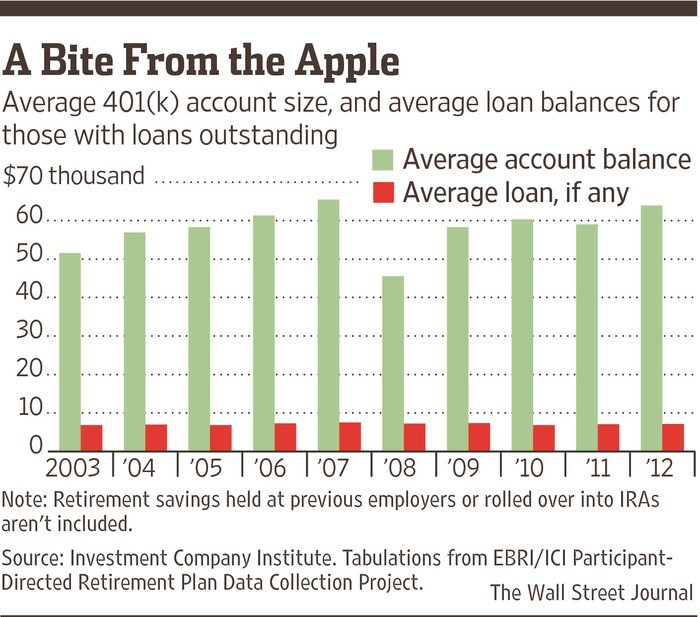Top 401(k) ETFs You Should Own In Your Retirement Plans
Post on: 1 Май, 2015 No Comment

Follow Comments Following Comments Unfollow Comments
What’s in your 401(k) plan? In most cases, less is more.
Fewer fund selections with more diversified funds helps you create a better portfolio. And if you have low-cost, index exchange-traded funds ( ETFs ), you can create a portfolio that’s going to build your retirement kitty.
While ETFs are still relatively new concepts in most 401(k) plans, they are ideal vehicles for creating a prudent portfolio. They are transparent, traded every day, cheap to own and in most cases represent huge, passively owned swaths of the market. You can hold most of the stock and bond markets with just a handful of ETFs (see below).
Brightscope. the company that rates and evaluates 401(k) and 403(b) plans, has just released a list of the top-20 exchange-traded funds held in U.S. 401(k) plans. It’s an informative list of what’s popular within retirement plans that offer them (not all do, but should). Here’s the list:
- Vanguard Total Bond Market (BND)
- SPDR S&P 500 (SPY)
- iShares Russell 2000 Index (IWM)
- Vanguard Total International Stock (VXUS)
- Shares Russell 1000 Value Index (IWD)
- iShares Core Total US Bond Market (AGG)
- iShares Russell 1000 Growth Index (IWF)
- Vanguard S&P Small-Cap 600 Index (VIOO)
- iShares S&P 500 Index (IVV)
- Vanguard Small Cap Growth (VBK)
- iShares MSCI EAFE Index
- Vanguard Value (VTV)
- iShares iBoxx $ Investment Grade Corporate Bond (LQD)
- SPDR Gold Shares (GLD)
- Vanguard S&P 500 (VOO)
- iShares Russell Midcap Value Index (IWS)
- iShares Barclays TIPS Bond (TIP)
- Vanguard REIT Index (VNQ)
- iPath Dow Jones- UBS Commodity Index Total Return (DJP)
- iShares S&P MidCap 400 Index (IJH)*
How to Build Your Portfolio from this List
The genuinely blissful thing about this list is that you can create some decent portfolios from it, but you won’t need 20 funds. You’ll only need a handful. It’s not complicated.
Several ETFs duplicate one another and others are not needed. And there are two funds that aren’t on the list that I would add.
Here are three workable portfolios, depending where you’re at in your career.
Ready to Roll (early career, growth-oriented, 20s to mid-30s)
Vanguard Total Market Stock Index ETF (VTI). This ultra-cheap index fund holds pretty much all of the US stock market at a rock-bottom 0.05% annually in expenses. It should be a core holding in all portfolios.
Vanguard Total International Stock Index ETF (VXUS). This fund holds a basket of non-U.S. stocks for 0.16% annually.
iShares Core Total U.S. Bond Market (AGG). This is a core bond holding in my retirement funds, which covers most of the U.S. bond market for 0.16% annually.
Vanguard REIT Index (VNQ ). This fund holds real estate investment trusts, which can offset some bond and stock-market risk for 0.10% annually.
iShares Barclays TIPS Bond (TIP). Holding inflation-indexed bonds, this fund will gain if inflation or interest rates rise, which depresses the prices of conventional bonds. The fund charges 0.2% annually.
PowerShares DB Commodity Index Tracking ETF (DBC). Worldwide, long-term demand for commodities from coal to zinc will boost the returns of this fund, which is also an inflation hedge. This is the most volatile and expensive fund in the line-up at 0.87% annually.
Allocation: 60% in the stock funds, 20% in bonds, 10% in TIPS, 5% in REITs and 5% in commodities. This is mostly growth-oriented for someone with a high tolerance for stock-market risk with some inflation protection.
Middle of the Road (mid-career, moderate risk)
Same funds, only with 50% in stocks, 40% in bonds and the rest split evenly among the rest of the funds.
Packing it In (near retirement, conservative risk)
Focusing on income and inflation protection, 40% in bonds, 30% in stocks, 20% in TIPS, 10% in REITs.
These suggested portfolios ratchet down market risk the closer you get to leaving the workforce. They are backed by solid diversification and are low cost. I own many of them and don’t plan to sell them.
The major problem with this list? Not every 401(k) plan provider offers these funds. But that doesn’t mean they shouldn’t be staples in your plan. Ask for them by name.
Also From Forbes:














